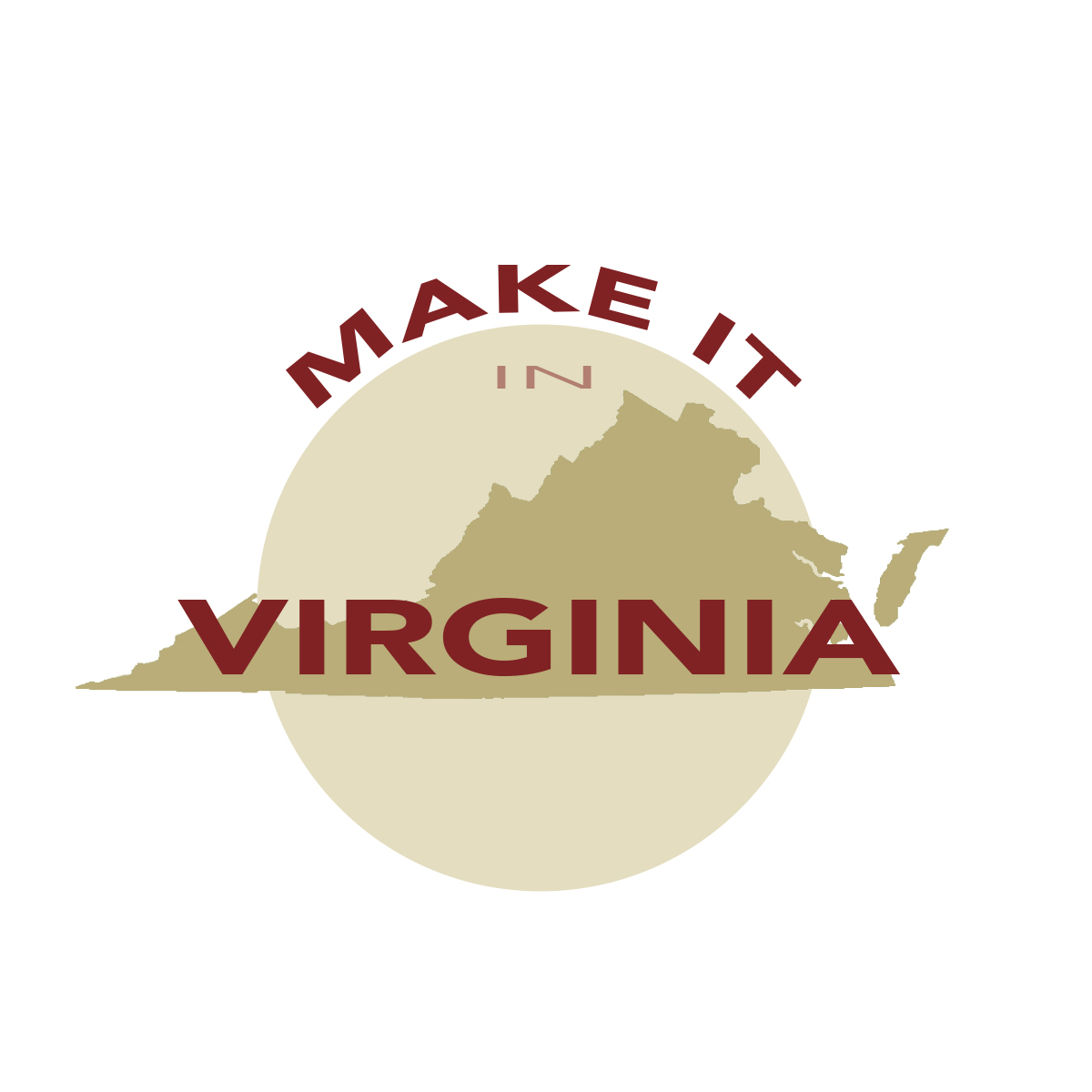
The story of finding success in Virginia is a long one. Whether you’re looking back through its history, or focusing on what goes on currently, it’s impossible to cover it all in one magazine article. There are many things one could focus on. Virginia is a diverse state with many types and sizes of businesses and a multitude of ways to support them and its citizens. Across the country, all of our states offer various ingredients for support and accomplishment. But I dare say none has the historical foundation or the current combination for success or the historical foundation that Virginia does. Three words kept coming up during interviews for this article: prescient, partnership and innovation seem to be the key ingredients for success in the state. These can all be found in Virginia’s towns, cities, companies, governing bodies and economic development entities.
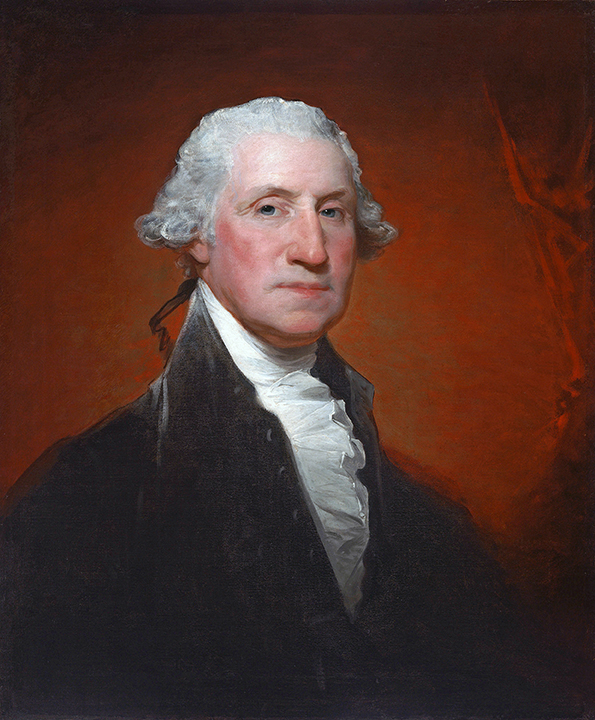 To understand Virginia, its economy and its people, it might help to remember that its founding was an entrepreneurial venture with lofty goals that turned out to be a mixture of both failure and success. A public-private partnership sanctioned by England’s King James, its fascinating history (that we won’t go into here) most likely cemented Virginia’s role as a seminal player for the nation’s economic and political foundations. There’s so much history you will have to delve further on your own. What is clear when you examine its history and the current state of the state is that Virginians set lofty goals that sometimes seem prescient, partnered to handle unwieldy projects, and kept going when things got tough.
To understand Virginia, its economy and its people, it might help to remember that its founding was an entrepreneurial venture with lofty goals that turned out to be a mixture of both failure and success. A public-private partnership sanctioned by England’s King James, its fascinating history (that we won’t go into here) most likely cemented Virginia’s role as a seminal player for the nation’s economic and political foundations. There’s so much history you will have to delve further on your own. What is clear when you examine its history and the current state of the state is that Virginians set lofty goals that sometimes seem prescient, partnered to handle unwieldy projects, and kept going when things got tough.
Without getting too dreamy, it is fair to say that there is a sense of hope to be found there. It’s a state that embraces the power of the federal government and that of private industry, and engages both in partnerships. It works to bring business to expand the economy and then invests those gains to improve life, not just in the state, but life for us all. To be fair, there are still areas in need of improvement, still things that need attention, but overall, Virginia is doing quite well for itself and for our country.
Perhaps the most powerful ingredients for success in Virginia are partnerships. Virginians seem to understand that the messy, contentious process of working together is worth navigating because that’s how to solve big problems, get big things done and create a better existence.
Innovation is certainly another key ingredient that is dappled across much of the state in its education system, economic development entities and companies located or doing business there. Here are a couple of standout examples: There is a program through Virginia Commonwealth University that teams an art student, an engineering student and a business student to brainstorm an idea and then create the path to make it happen. Dominion Energy has a yearly competition in which any employee in any position can submit an innovative idea that he/she thinks would better the company or the world. The state also has a Workforce Innovation Network. The list goes on and on.
Arguably one the largest and most important innovative investments, one that laid the cornerstone of Virginia’s economy and one that adds to the ability to bring success to all their towns and cities, is the ports and rail system. It also happens to be a fine example of the power of partnerships. As a young man, George Washington surmised that the ability to move goods and people was a sound way to ensure becoming an economic powerhouse. Washington actually did the land survey, and later advocated for the creation of a lock and channel system on the James River where it runs through Richmond. He wanted Virginia to be the economic dynamo he envisioned. Work on the waterway, done in the early days of the United States, was one of the first federally funded infrastructure projects. Years in, as the economy changed, the project did, too. It went from waterway transport to rail. It’s still a seminal project in both Virginian and U.S. economic history because it focused on the need for logistics, called for local and federal partners to get the work done and provided the U.S. with a gateway to the world.
So that we don’t get bogged down in the intricate details of deals made in the last 400 years that helped port and rail grow and evolve, we will skip to the present-day state of things, where it continues to be foundational to the state’s, as well as the country’s, economy. It is also a great source of pride.
No doubt you are at least aware, if not completely affected by, the supply chain issues kicked up by the COVID-19 pandemic. You have probably seen images of piles of containers stacked up on docks around the world or ships lined up waiting to get into harbors. You must have experienced empty shelves or missing items at retail or grocery stores. Perhaps you own, or are involved in, a business that relies on manufactured parts, commodities or one of the plethora of things that are lagging in logistics systems across the globe.
Well, Virginia’s ports did not — and most probably will not — contribute to these logistical slow-downs. A staggering comparison will give some perspective on just how well the Virginia Port system performs. While many other U.S. ports are averaging between 4 to 7 hours for truck turnaround time (truck arriving in port, receiving its load and exiting), Virginia ports average under 50 minutes. The incredible difference is due to investments in infrastructure and innovation made over the last decade. They’ve deepened channels, installed cranes, automated logistics, expanded, upgraded and modernized all of their port properties and rail yards. To picture how they function, imagine Tetris meets air traffic controller.
Joe Harris, Director of Media Relations for The Virginia Port Authority (VPA), called these 21st century port complexes “uber efficient.” He gives credit for the ports flourishing during these challenging times to a combination of the new state-of-the-art machinery and “really good labor partners and really good operations teams.” For the successes during the COVID period, Harris also credits “The Virginia Model” — the state authority owns and/or leases and operates all six of its terminals. This consolidated power model, Harris explained, allows for fast, decisive decision making. If an issue at one harbor slows things down, a quick decision that shifts work to an alternate harbor can be implemented in less than an hour. This system assures continuity in productivity. In contrast, New York and Los Angeles port properties are landlord owned and tenant leased, creating a varied ownership system that is more inclined to competition rather than collaboration. Issues causing slowdowns require input from multiple entities that must come to a consensus. Depending on the problem, this can slow the process by hours or days.
Harris also explained the economic development aspect of VPA. He said, “Putting money into these assets is setting us up for the future. When you attract cargo you also attract the companies that own it.” Harris added, “Our mission is not to compete with other ports, but rather to be a gateway to the global market from the East Coast.”
Keeping up with global demand means the ports and rail system are in a constant state of expansion. Work has already begun to dredge Norfolk port’s entrance channel to 55 feet deep and to widen it. When completed in 2024, it will be the widest, deepest channel on the East Coast, and the only one in the world able to accommodate the side-by-side passing of the world’s largest vessels. (Imagine two aircraft carriers passing in opposite directions.) The VPA also recently approved $79.5 million to double the size of Norfolk International Terminal’s rail capacity and outfit it with new cranes to handle the increased freight. “We embarked on a pretty unprecedented period of investment and expansion,” Joe Harris said. “If you look at everything collectively from 2012 to 2020, it’s about a billion dollars worth, and by 2024, it will be in the billion-and-a-half dollar range.”
With this long history of investments to create connectivity to move people and things, and given the incredible payoffs the state has reaped in return, it’s no wonder Virginia took a leap when a new type of connectivity for a new form of product appeared on the economic horizon as we were entering the 21st century. That product was data and the connectivity was fiber-optic cable.
Data gathering and the connectivity to exchange and analyze data is what has built massive companies like SAS, Microsoft, Visa and Google to name just a few. All are present in Virginia, thanks to the state’s ability to capitalize on its strengths, create tax breaks, offer affordable utilities and a dynamic workforce, and generally believing in and supporting what appeared to many outside the IT industry in the early 2000s to be dubious choices. Again, partnerships focused on innovation made this success possible and launched the state into the new millennium economy. We all owe a “thank you” to Virginia for helping to give us and much of the world access to the Internet.
Subsea cable is loaded on a ship (left photo) and then laid across the ocean floor. Virginia Beach is the landing point for four new transoceanic fiber cable connection points (top right photo).
Building on a rich history of federal investments in fiber optics as well as pioneering tax advantages, Virginia hosts the largest data center market in the world and Northern Virginia is home to more than 20 percent of all known hyper-scale data centers worldwide. Shown here (bottom right photo) is the CyrusOne data center located in Sterling, Va.
Subsea cables are a significant a part of this lightening-fast way we communicate and share things. I spoke with Vinay Nagpal, a leader in digital infrastructure solutions with over 26 years of experience in its development. As the president of InterGlobix, a global consultancy firm, he has led world-wide initiatives focused on the convergence of subsea fibers with data centers and terrestrial fiber. Mr. Nagpal offered examples that illustrate the magnitude of what happens through subsea cables. “Imagine all of the publications held by the Library of Congress, the entirety of it all digitized. . .all that can be transferred three times per second on the subsea cable running from Virginia to France on the Dunant cable.” He added, “Think about all the movies ever made in 4K high definition, in every language spoken on the planet. Those can be transferred in 42 seconds from Virginia to Spain on the MAREA cable. That is the capacity of these state-of-the-art subsea cables.”
You can imagine the enormity of work and cost involved, but here again, Virginia took the path of the visionary leader investing heavily to lure data centers to Loudoun and Henrico counties, which have become the world’s largest data center market. This topic is much written about, so we will focus on a perhaps lesser known, or certainly less-written-about topic — the world-class connectivity that’s been brought to Virginia’s mid-market and rural areas, financed mostly by yet another partnership.
With the strong support of the Virginia Tobacco Commission (VTC) and the U.S. Department of Commerce Economic Development Administration (EDA), Mid-Atlantic Broadband Company (MBC) received $12 million in capital grants to build the first phase of the open-access fiber network in early 2004. Additional capital grants of $24 million were awarded by the VTC in 2005 and 2006 to finish the first phase of the network.
MBC was tasked to design, build, operate, manage and maintain a state-of-the-art, carrier-class fiber optic network that enabled retail private sector telecommunications providers to serve the region. This task would help reduce the cost of broadband services by leveling the playing field, expanding the reach of broadband in more of its rural communities, and creating a competitive economic advantage for Southern Virginia. The entire state will have full coverage by 2024.
Martinsville, located in Southern Virginia, was a recipient of the connectivity installed by Mid-Atlantic Broadband Company. Like many places, it was hard hit by losses in furniture and textile manufacturing and the decrease in tobacco production. As jobs were lost, Martinsville residents moved away in search of employment. Martinsville’s turnaround story is yet another full of visionary thinking and bold choices. It includes the creation of partnerships that made use of private and public funding, as well as state and federal programs.
One of the biggest shifts for Martinsville and surrounding Henry County was the sale of its local hospital to Lifepoint in 2005, which turned out to be a masterful move. The hospital and medical care in the area took a leap forward, and the proceeds were used to set up a foundation whose sole purpose was to benefit the area’s economy and its people. Using only the returns and not touching the principal, funds were used to repair and install sidewalks, upgrade street lighting, create walking and biking paths, build outdoor gathering places, and re-envision and subsidize the reuse of empty buildings. The plan was generally to remake the town and surrounding area into the bucolic spot it had been back when the large furniture companies were the primary benefactors. But, leadership realized that no matter how great the amenities, without available good-paying jobs, the area’s economy would continue to suffer. So funds were also used to build new business parks, infrastructure and speculative buildings that could be used to court companies worldwide. The plan of enticing companies with Martinsville/Henry County’s small-town way of life coupled with world-class digital and logistical connectivity at greatly reduced prices is working.
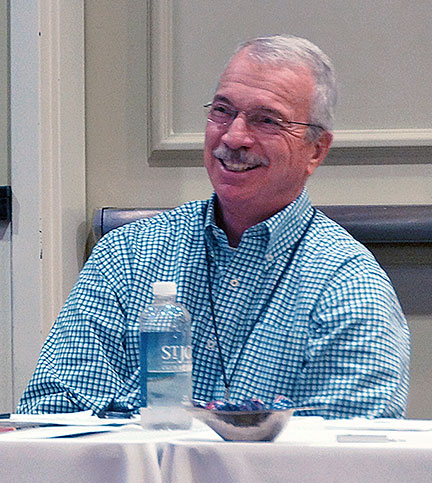 Recently announced, German sink manufacturer Shock GmbH plans to build an $85 million facility in The Patriot Centre Industrial Park and create 355 new jobs. Mark Heath, President and CEO of Martinsville/Henry County Development Corp., said, “If we did not have the type broadband that we do, we would not have landed this project.”
Recently announced, German sink manufacturer Shock GmbH plans to build an $85 million facility in The Patriot Centre Industrial Park and create 355 new jobs. Mark Heath, President and CEO of Martinsville/Henry County Development Corp., said, “If we did not have the type broadband that we do, we would not have landed this project.”
Eastman Company, formerly known as Eastman-Kodak (remember film cameras?) has been located in Martinsville/Henry County since 2012, and it remains there, reinvented and now called the Eastman Chemical Company.
Roanoke is another Virginia city that has benefited greatly from access to high-speed Internet. Just this past year it landed on the top ten list for “Best Zoom Towns.” While Roanoke can attribute some of its success to broadband, the focus they gave to “livability of place” was another more localized program that also had a big hand in this success.
Twelve years ago, long before that phrase became common, Roanoke evaluated its assets and counted its mountains, streams, rivers and other natural areas as assets to value when marketing the area for business and relocation. Touting its natural beauty, access to outdoor activities in conjunction with its workforce, good healthcare and higher learning institutes has paid off.
Another big reason for its growth and success is the value and attention given to companies located in the community. “Virginia is investing in itself and its future,” said Jill Loope, Director of Economic Development for Roanoke County. She cited Harris Night Vision, which employed 500 in the area, as an example of how well the state has done at retaining and assisting expansion of companies. When Elbit Systems became interested in purchasing the 50-year-old company, the governor and local economic development worked to assure the company would remain in Roanoke. It did, and employment has grown to over 600 since the 2019 purchase.
The VTC Research Institute and School of Medicine, Carilion Clinic and Carilion Roanoke Memorial Hospital (below) are Roanoke’s major employers. Photo by Don Petersen
Dr. Carol Gilbert (shown left) of the Virginia Tech Carilion School of Medicine and student Lauren Poindexter prepare a “ghost heart.” This low-cost procedure could one day be used to make organs for transplant using basic household items. Photo by David Hungate
Several food companies have also located in Roanoke due to the quality and quantity of water. Roanoke’s water is considered to be some of the cleanest in the U.S.
An area that four decades ago learned just how water can affect life and business in a community is Petersburg/Hopewell, which is home to a large cluster of chemical production companies. After a disastrous spill in the 1970s had deleterious effects on life and business, tighter regulations and watchdog agencies instituted a cleanup and oversight to ensure there were no more spills. It took time, but now one can see the area is on the cusp of its renaissance. Much investment has been and is still being made to ensure quality of life in the area that is comparable to its neighbor Richmond and other hot spots in Virginia.
New beautiful community libraries in both Petersburg and Hopewell are beacons of the value placed upon knowledge and community. River walks, parks and green spaces are also receiving investments. Helping drive the wave of change and revitalization throughout the area is the pharmaceutical industry. A recent deal, again partnering public and private money, has been made to make the area the largest producer of base chemical compounds necessary for the manufacturing of many of our commonly used medicines. The COVID-19 pandemic brought to light the shaky ground on which the United States healthcare system rests in regard to the many medicines Americans take daily to manage their health. Currently, we get most of these base compounds from China and India with little to no production here at home. In the works is the planned re-engagement of a local chemical plant. When it is again operational, the focus will be on making necessary ingredients and then to create and hold a stockpile, much like that of our strategic oil reserve.
According to President of Virginia’s Gateway Region Keith Boswell, pharmaceutical manufacturer AMPAC Fine Chemicals will invest $25 million to expand its existing operation in the City of Petersburg. New community libraries in both Petersburg and Hopewell are beacons of the value placed upon knowledge and community.
There is a cluster of pharmaceutical manufacturing companies in Petersburg/Hopewell which will continue to grow, according to Keith Boswell, President of Virginia’s Gateway Region, the regional economic development organization that markets the counties of Chesterfield, Dinwiddie, Prince George, Surry and Sussex.
 There is a standout entity helping drive the entire state’s ecosystem of success — Dominion Energy. The utility has been a key partner helping lead the growth of not only data centers, but also broadband accessibility and clean energy.
There is a standout entity helping drive the entire state’s ecosystem of success — Dominion Energy. The utility has been a key partner helping lead the growth of not only data centers, but also broadband accessibility and clean energy.
Dominion is strongly aligned with creating partnerships, embracing change and implementing innovative ideas. As part of its plan to achieve net zero emissions by 2050, it became the first utility to install two offshore wind turbines in U.S. federal waters, 27 miles off the coast of Virginia Beach. Their plans call for 176 more turbines to be built by 2026, which will power up to 660,000 homes and reduce carbon emissions equivalent to removing 1 million non-electric cars per year. Using U.S. steel and labor, Dominion Energy is building a Jones Act qualified vessel needed to install offshore wind. Ørsted and Eversource are initially chartering the vessel to install offshore wind turbines in the Northeast.
The project is not only creating jobs directly related to installation, but as a result, the U.S. is getting its first offshore wind turbine blade production facility. Siemens Gamesa Renewable Energy announced in October that it will build a $200 million production plant in Portsmouth, Va., creating 310 jobs. No doubt this will make Hampton Roads a hub for offshore clean energy.
The idea of innovation, cooperation and helping America thrive is woven into the fabric of Dominion Energy’s corporate culture. They have a Department of Innovation, rank frequently at the top of the list for helping veterans and their families, and believe strongly in philanthropy, funding a multitude of community outreach programs and giving over 100,000 volunteer hours annually.
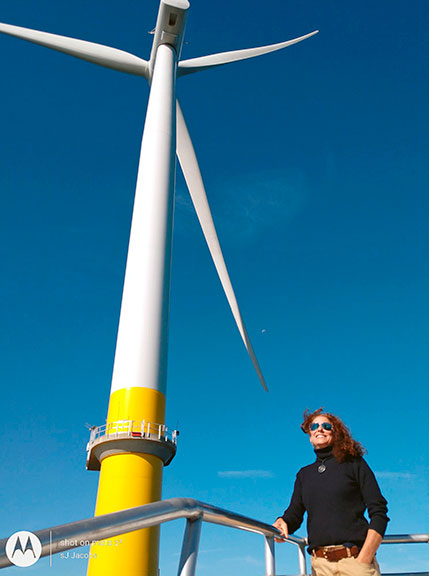 Dominion Energy is headquartered in Richmond and its recently completed high-rise is a standout along the skyline
Dominion Energy is headquartered in Richmond and its recently completed high-rise is a standout along the skyline
When trying to understand success in Virginia, its foundations and its future, it helps to take a closer look at Richmond, where the roots of business for the state and our country lie. It’s a bustling place where historic and futuristic buildings sit side by side. It has a multitude of restaurants, wine bars, brew pubs and clubs, as well as many galleries, historic landmarks and museums that contribute to its vibrant day- and nightlife. The city’s architecture, elevated road system and tunnels, as well as the James River, with its Class 4 rapids, and the many bridges and canal walk make Richmond an interesting place to explore whether you live there or are just visiting.
Richmond is considered to be a very affordable city, with a cost of living nearly 4 percent under the national average due in part to cheaper electricity that runs 28 percent below average. Housing, like almost everything else there, is a blend of historic and new. Many of its neighborhoods are revitalized, offering a variety of freestanding or town homes, as well as modern complexes with amenities.
The diverse, well-educated population makes up one of Virginia’s strongest workforces. Over 40 percent have at least a bachelor’s degree, and over 60 percent have at least some college. Employees can get to work by public transit, walking, biking or, as Dominion Energy’s CEO is known to do, by kayaking. For those more inclined to drive, they can happily get to and from work in under 25 minutes, which makes Richmond one of the largest cities with one of the shortest commute times.
With a low corporate tax rate of 6 percent (which hasn’t changed since the 1970s), Richmond is home to numerous corporations including forward-looking companies like laboratory waste reducing company Grenova Life Sciences, eco-friendly decor Viva Terra and DuPont to name a few. They are all taking advantage of the convenient location and advanced logistics ecosystem to move their products, which can reach over 45 percent of Americans within a day or less. The city is also home to large services or data companies like Capital One, which employs over 13,000, and CoStar, a real estate analytics firm that relocated to Richmond in 2016, announced in April of this year a $130 million expansion.
Business has plenty of available assistance in Richmond. It is home to many economic development entities including the state’s Virginia Economic Development Partnership (VEDP), Greater Richmond Partnership (GRP), Richmond Economic Development Authority and Virginia Commonwealth University (VCU). All are committed to supporting existing business, courting corporations and innovating to keep the workforce and the economy vibrant.
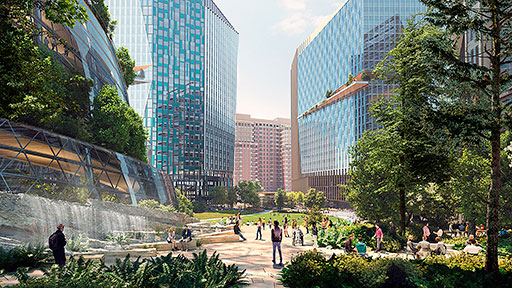 Given the historic investments and the current endeavors to create robust infrastructure for both the material and digital economies, it is no wonder that one of the country’s most futuristic companies decided to land its second headquarters in Virginia. Amazon is building a 6 million-square-foot campus in Arlington County, which currently employs over 3,500 and will eventually create 25,000 jobs.
Given the historic investments and the current endeavors to create robust infrastructure for both the material and digital economies, it is no wonder that one of the country’s most futuristic companies decided to land its second headquarters in Virginia. Amazon is building a 6 million-square-foot campus in Arlington County, which currently employs over 3,500 and will eventually create 25,000 jobs.
It’s been said by several folks in economic development circles that although incentives were a key component to land the project, Amazon’s recognition of Virginia’s assets were equally or more important — the talent pool and advanced infrastructure for both logistics and data clearly helped cinch the deal. And one could argue that perhaps Virginia’s long history of envisioning and building for the future had something to do with it.